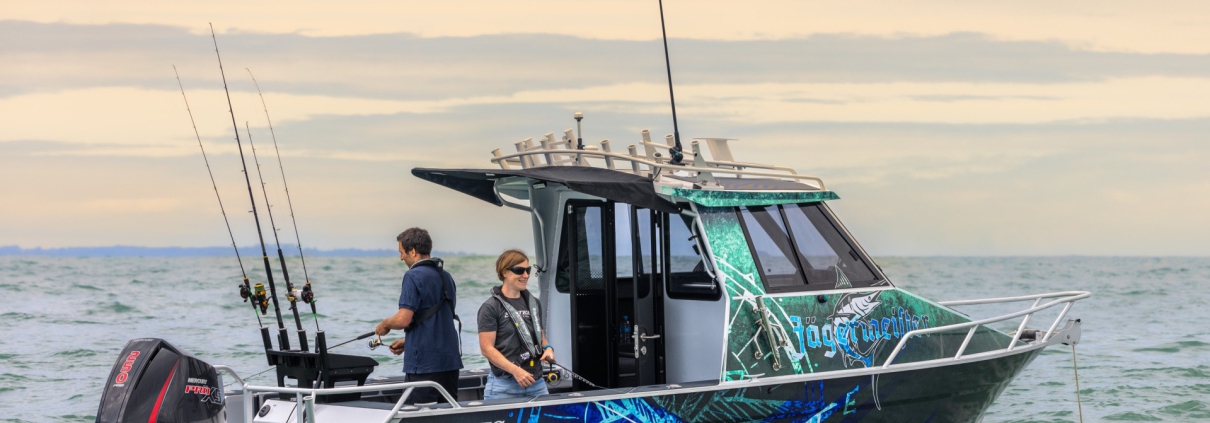Lithium Marine Starting Batteries: What Experienced Boaters Should Know Before Buying
Why Lithium for Starting Applications at Sea?
Lithium marine starting batteries have rapidly gained popularity among boaters who demand high performance and reliability. Designed to deliver strong bursts of current, these batteries ensure your engine starts quickly and consistently—even in challenging marine environments.
Key benefits include:
- High Cold Cranking Amps (CCA): Lithium batteries can deliver impressive instantaneous current to reliably start large outboard or inboard engines.
- Long Lifespan: Expect thousands of cycles and years of dependable service, significantly extending the time between replacements.
- Corrosion and Temperature Resistance: Built with robust casing and advanced Battery Management Systems (BMS), these batteries withstand moisture, salt exposure, and temperature swings common at sea.
- Weight and Space Savings: Lithium batteries weigh up to 60% less than equivalent lead-based options, improving vessel balance and freeing up valuable space.
Not All Lithium Batteries Are Created Equal: What to Look For
If you’re shopping for a lithium marine starting battery, it’s critical to differentiate between true starting batteries and deep cycle or multi-purpose lithium batteries.
- Starting Battery Ratings: Check for a high Cold Cranking Amps (CCA) rating—typically 800 CCA or more—to ensure the battery can deliver the rapid current burst needed for engine ignition.
- Purpose-Built BMS: The Battery Management System should be designed to handle short, high-discharge bursts and protect against damage during rapid cycling.
- Manufacturer Certifications: Look for batteries certified specifically for marine starting applications, which ensures they meet stringent safety and performance standards.
Using a deep cycle lithium battery in place of a starting battery can lead to poor engine start performance or damage to the battery system.
Installation Considerations Unique to Lithium Starting Batteries
Proper installation is key to maximizing the benefits of your lithium starting battery:
- Charging Compatibility: Many marine alternators and chargers are calibrated for lead-acid batteries. Ensure your charging system supports lithium chemistry or consider installing a DC-DC charger designed for lithium batteries.
- Environmental Protection: Lithium batteries should have robust waterproof and corrosion-resistant housings suitable for marine conditions. Pay attention to terminal design to prevent loosening or corrosion.
- Thermal Management: Avoid installing lithium batteries in fully enclosed spaces without ventilation or heat dissipation, as BMS systems require temperature regulation to function optimally.
Beyond Starting: How Smart Boaters Use Lithium for Dual Purposes
Some lithium marine starting batteries offer dual functionality—capable of providing high current for engine starting as well as powering auxiliary equipment for short durations, such as bilge pumps, navigation lights, or communication devices.
- These batteries often feature dual BMS channels or advanced output management to handle both peak discharge and moderate loads safely.
- Dual-purpose batteries can reduce overall weight and complexity by combining starting and limited house power in one unit.
- Examples include powering a trolling motor for short runs after engine startup or running night fishing lights without draining your primary house battery bank.
Integration Readiness: Solar & Shore Power Charging
Modern boaters increasingly adopt solar panels and shore power as supplementary energy sources. Lithium starting batteries designed with integration in mind offer:
- Support for MPPT Solar Charge Controllers: Efficiently absorb variable solar energy without overcharging.
- Smart Shore Power Charging: Compatibility with lithium-optimized chargers ensures battery longevity and rapid replenishment while docked.
- Remote Monitoring & Communication: Built-in Bluetooth or CAN bus interfaces allow real-time tracking of battery health, temperature, and starting cycles via smartphone apps or onboard displays.
- System Conflict Prevention: Properly designed lithium batteries include protection against reverse polarity and backflow currents that can damage other components.
Maintenance & Safety Checklist
To ensure safe and reliable operation:
- Regularly Review BMS Logs: If available, inspect battery management data every quarter for anomalies.
- Inspect Terminal Connections: Tighten and clean terminals annually, especially after heavy use or rough sea conditions.
- Monitor Voltage During Starts: Use voltage display monitors to verify consistent peak voltage output at engine startup.
- Follow Manufacturer Guidelines: Adhere to specific charging, storage, and usage recommendations to prevent warranty issues.
Conclusion
For boaters already considering lithium technology, choosing the right marine starting battery can significantly enhance reliability, reduce maintenance, and improve vessel performance. The key is to focus on products explicitly designed and certified for starting use—not just any lithium battery.
By paying attention to CCA ratings, BMS capabilities, installation best practices, and integration features, you can ensure your investment delivers dependable starts and supports your boat’s electrical ecosystem for years to come.


